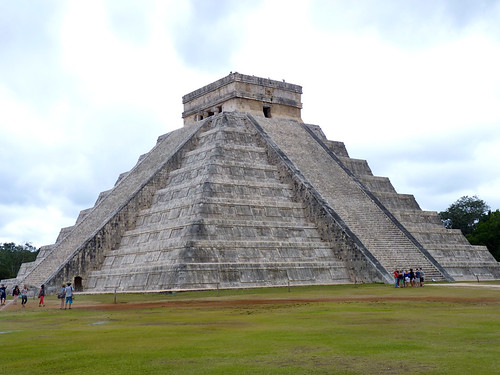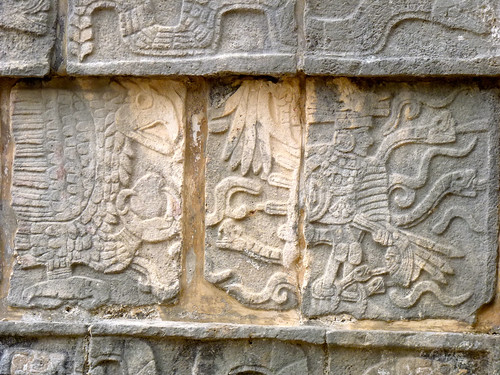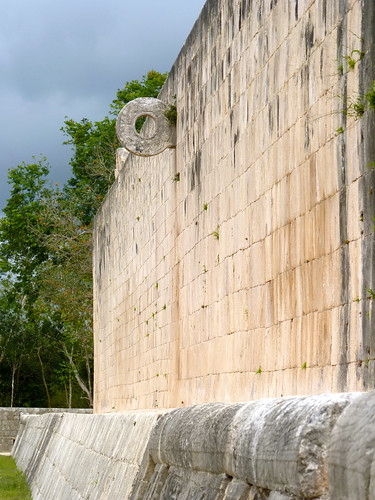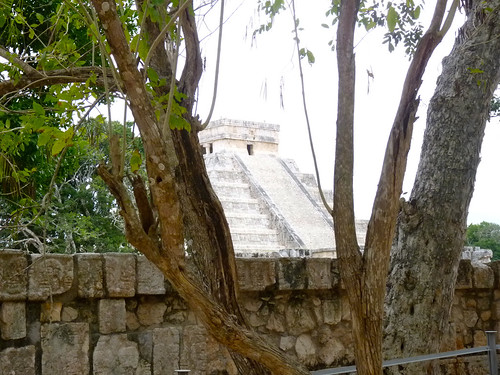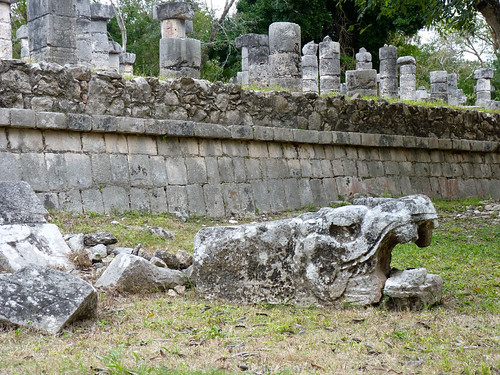When I found myself within striking distance of the Yucatan Peninsula, I knew I had to go to Chichén Itzá. I got up before dawn and took a ferry through rough waters from Cozumel, then climbed on a bus and headed across the swamplands to the Mayan ruins. Exhausted but happy, I arrived at noon and fought my way through the jungle of tour buses to El Castillo (the pyramid of Kukulkan).
The archeological site is situated between two cenotes, or freshwater sinkholes. For the ancient Mayans, one provided drinking water. The other was fed a diet of human bones.
On the left is a carving of an eagle, clutching a human heart in its talons. On the right, fountains of blood (represented by serpents) as a life is taken away.
This hoop is in the Great Ball Court, where the winning player had the honor of being decapitated.
Tzompantli, or the Skull Wall, with the pyramid in the background.
Below, one of the many serpent deities at Chichén Itzá.
